Salamander Search – April 29, 2006
Although not finding any salamanders, about 30 kids and adults discovered a great variety of wildlife while looking under logs and rocks and generally exploring the habitats of upper Sligo in a natural history outing on Saturday, April 29, led by Howard University herpetologist George Middendorf.
George speculated that the dry weather of the last week probably drove the salamanders too deep underground for us to find. But the cool, sunny day was not completely without its amphibians and reptiles, as wood frog tadpoles and a juvenile northern watersnake were found in the course of the afternoon
A few folks watch the wood frog tadpoles swimming beneath the algae,
while George Middendorf looks under rocks and logs for tadpoles.
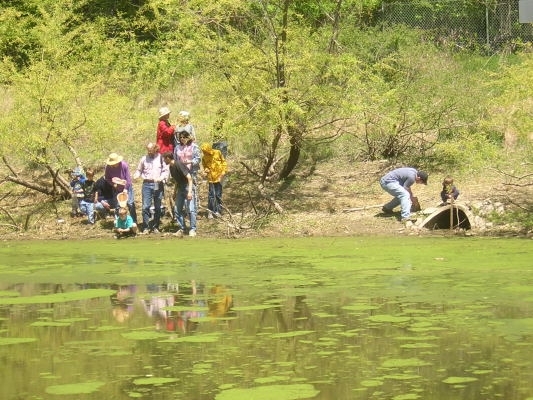
At the easternmost edge of the stormwater ponds, we observed dozens of tadpoles swimming just beneath the surface of the spreading algae. Chris Sargent took a few home and later identified them as wood frog tadpoles; she explained that they usually prefer vernal pools (smaller, shallower bodies that fill only in spring), but that they might have used the stormwater pond for mating when the nearest vernal pool dried out early during the driest March on record. (Our catch at the ponds also included a water beetle and a snail, which emerged from its tiny shell while in our bucket.)
One of the wood frog tadpoles we caught, photographed after Chris Sargent took a few home
to identify in her home lab. One of its characteristics are the gold-flecked spots.
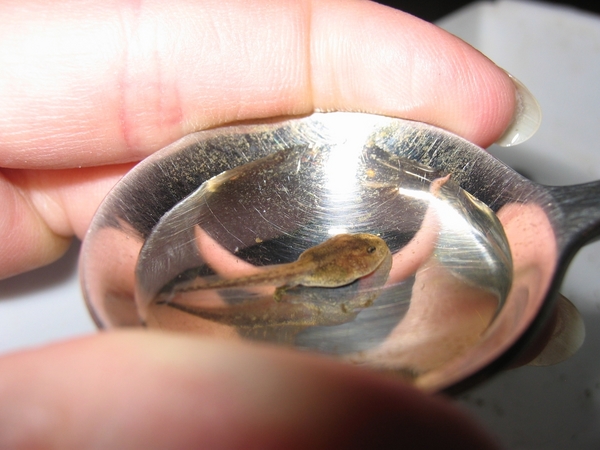
Photo by Chris Sargent
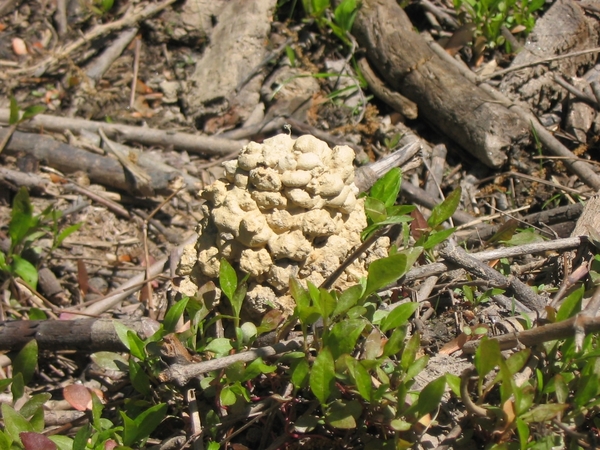
Photo by Matthew Cohen
New Sligo member Matthew Cohen identified the call of a red-shouldered hawk, which flew into a tree on the western bank of the ponds. (The hawk later reappeared further upstream.) Meanwhile, a young member of our troupe captured a wolf spider, which, Chris explained, doesn’t build nests, but instead captures its pray by stalking, leaping and even diving under water. Chris also noticed a fish spider, which is even more aquatic than the wolf spider, sometimes diving to catch minnows!
Moving upstream, we noticed that Park and Planning had planted willow saplings along the stream bank, following completion of the dredging project. In the same area, many tiger swallowtails were aflight and wood thrushes could be heard singing their gorgeous song.
Photo by Ed Murtagh
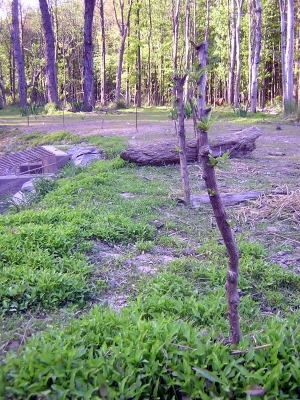
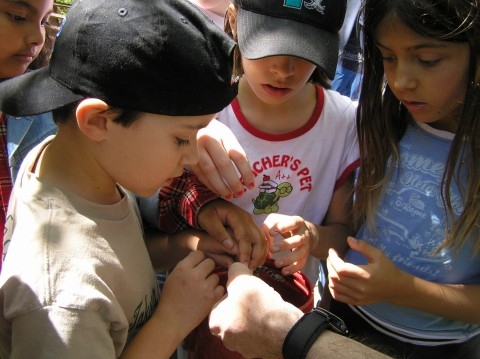
We all regrouped at the bridge over the Creek at Ladd St., just in time for Joshua Blockstein and Emily Middendorf to capture a juvenile northern watersnake. Photo by Kathy Michels
We all admired its beautiful black-and-gray pattern, and many adoring photographs were taken
while the snake basked in the warm sun in someone’s caring palm.
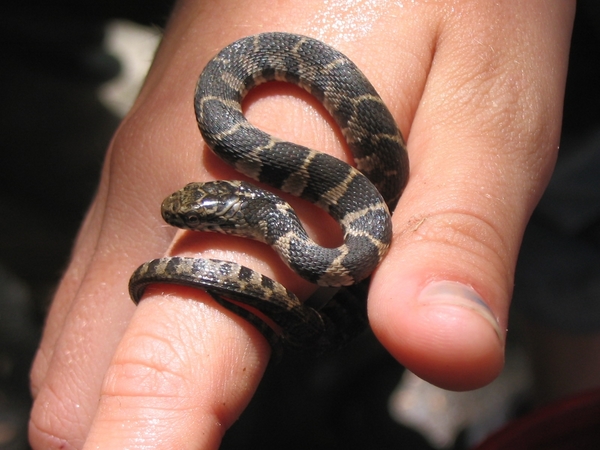
Our final stop was the area near the vernal pool and deer exclosure, where red-backed salamanders
had been found during the 2004 salamander walk. None were found this year, but we did see the skull
of a red fox, with its complete set of healthy teeth still intact, and the pattern of ridges
on its head (and which give it its Latin name) clearly visible.
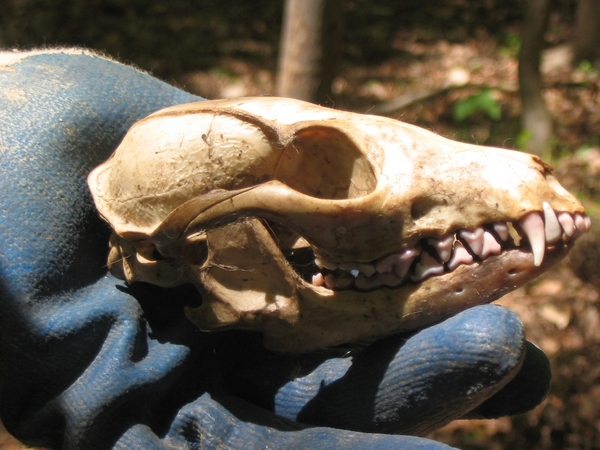
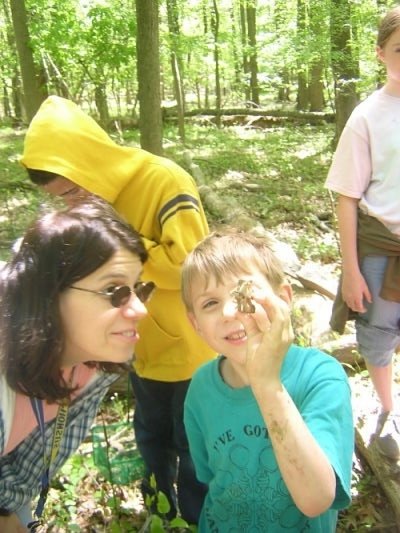
Admiring the vertebrae from the fox skeleton we found.
Photo by Ed Murtagh
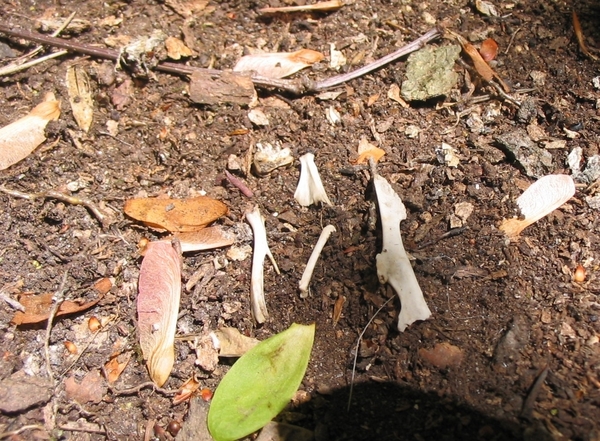
Photo by Matthew Cohen
In a discussion after the walk, George suggested that we try monitoring salamanders using a series of “cover boards,” untreated plywood (“the cheapest you can get”) placed on the ground to attract salamanders and provide habitat. The boards should be about two feet square and 3/4″ thick, and can be placed, for example, along a transect (straight line) from the stormwater ponds up to Channing Drive (about one km). Perhaps as many as one every ten to twenty meters could be put down, but we do not have to be that ambitious. They can be checked once or twice a month. George has a current herpetology permit from the Maryand DNR, in case we need him to vouch for us with Park and Planning, the county, or the State.
Report by Michael Wilpers
Natural History Committee


